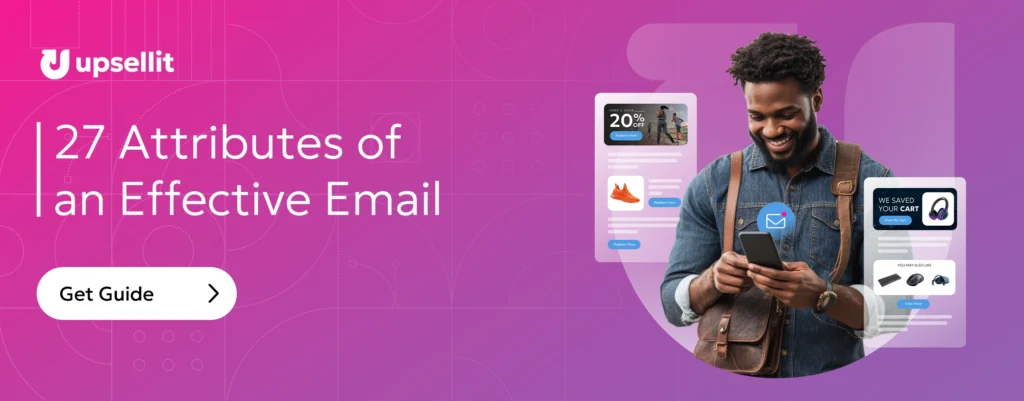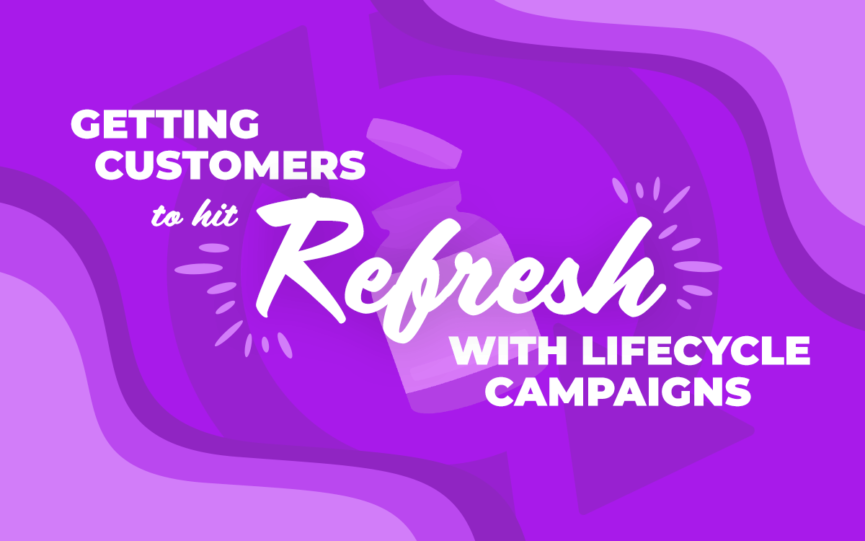Online marketplaces are increasingly competitive and retailers tend to focus on immediate conversions. Since converting a returning customer is 5-10x more cost effective than converting a new one, customer retention is arguably even more important than new customer acquisition. Initial conversions aren’t the end, they’re just the beginning. Cue lifecycle campaigns!
What are Lifecycle Campaigns?
Lifecycle campaigns build on relationships with previous customers in new, relevant ways. These campaigns are an excellent way to continually re-engage customers who have interacted with your brand already. By leveraging information gathered from previous interactions, you can target them far more effectively than you could a brand-new visitor.
To understand how to create effective lifecycle campaigns, we must first understand the customer lifecycle and its stages.
What are the Stages of the Customer Lifecycle?
Awareness
The awareness stage is marked by the customer’s first learning of your business. To gain some insight into this stage, it’s helpful to look at where your shoppers are navigating to your site from. Where are they hearing about you and what is getting their attention?
Engagement
The engagement stage is when your shopper begins to develop in interest in your brand and its offerings. They see something they like, whether it’s a product they’re interested in or a clever engagement message, and that makes them want to know more about your brand.
Evaluation
The evaluation stage is when your shopper moves from an interest in your products to a consideration of whether to purchase or not. They may have added items to their cart, but until they hit the ‘checkout’ button, they remain in the evaluation stage.
Purchase
The purchase stage occurs when a shopper makes the decision to convert. This typically takes place around the time they click through to the checkout page. At this stage, purchase intent is the highest, but there is still potential for abandonment until the transaction is fully completed.
Loyalty/Advocacy
Even after a shopper has completed a purchase, their customer journey is not over. The post-purchase period is a crucial time for the brand to nurture its relationship with the newly-acquired customer.
When done well, these communications can foster customer loyalty and even turn some customers into advocates of your brand. Advocates are loyal customers who engage with your business regularly and are likely to recommend you to their friends.
Lifecycle Campaigns to Use Throughout the Customer Journey
Welcome Emails
Offering a regular newsletter is a great way to communicate with your customers throughout their journey, whether they’re a loyal customer or have only visited your site once. Once a shopper has signed up to receive emails from your brand, make sure to start off on the right foot with an engaging and inviting welcome email.

Studies show that 74% of consumers expect a welcome email as soon as they subscribe to a newsletter or mailing list, so chances are your recipients will appreciate the gesture and walk away looking forward to continued communication from your brand.
Product Recommendations
When your shoppers are still in the pre-purchase stages, you can use behavioral data such as their browsing history and clicking patterns on your site to make advanced product recommendations. These recommendations can be your best sellers or products similar to ones the shopper has shown interest in.

Product recommendations not only help increase your AOV, they also improve the experience for your shopper by ensuring they don’t miss out on anything that might intrigue them.
Cart Abandonment Reminders
In the event a shopper abandons your site with items in their cart, cart abandonment reminder emails are a great tool to continue communication offsite, encouraging shoppers to come back and complete their purchase. UpSellit’s Cart Rebuilder technology reproduces shoppers’ carts in these emails to create an easy way for them to pick up right where they left off.

To make completing a purchase even more enticing, you might use cart abandonment emails to offer incentives or reiterate existing offers such as free shipping and/or returns.
Post-Purchase Product Recommendations
Once a shopper has made a purchase with your brand, a helpful use of lifecycle remarketing comes in the form of emailed product recommendations. Instead of guessing at what a customer might want, you can leverage their past purchases to predict what they’ll be interested in now.
For instance, if a customer buys a phone, an email recommending accessories or an extended warranty could be mutually beneficial.
For fashion, send accessory suggestions that complement a recently purchased piece to help “complete the look.” Similar approaches can be used for furniture, home goods, and numerous other categories.

Loyalty Program Invites
Another useful post-purchase remarketing campaign is to invite customers to join your loyalty program. Loyalty programs encourage repeat business by offering special perks members can work their way towards each time they purchase from your brand.
These programs are incredibly effective at creating loyal customers. 79% of consumers say loyalty programs make them more likely to continue doing business with brands. Offer your customers an incentive to keep coming back and watch the lifetime value of those customers continue to rise.
Product Review Requests
The value of lifecycle campaigns doesn’t stop at increased sales. Asking previous customers to leave product reviews is a great way to increase your site’s public image.
In general, the more reviews your site has, the more trustworthy it seems. 84% of consumers trust online product reviews as much as a recommendation from a friend. Unfortunately, only 1.5% of purchasers leave reviews.
Lifecycle marketing is especially helpful in eliminating the reporting bias inherent in reviews of any type. If a customer has a good experience, they’re likely to enjoy the product and move on, leaving the review section to be overtaken by the smaller number of customers who had a negative experience. Inviting customers to leave a review encourages that silent majority to speak out and leave a positive review, boosting your brand image in the process.
Driving Long Term Growth with Lifecycle Marketing
Lifecycle campaigns are the very definition of playing the long game. Instead of focusing on a single conversion, they set the stage for numerous future conversions. Just as a restaurant can’t survive without regular customers, ecommerce sites need the trust and support of frequent shoppers to thrive.
By engaging customers who have previously visited your site, you build up a client base, grow your brand, and set the stage for long-term success. To learn more about driving conversions with email marketing, check out Upsellit’s 27 Attributes of an Effective Email.

